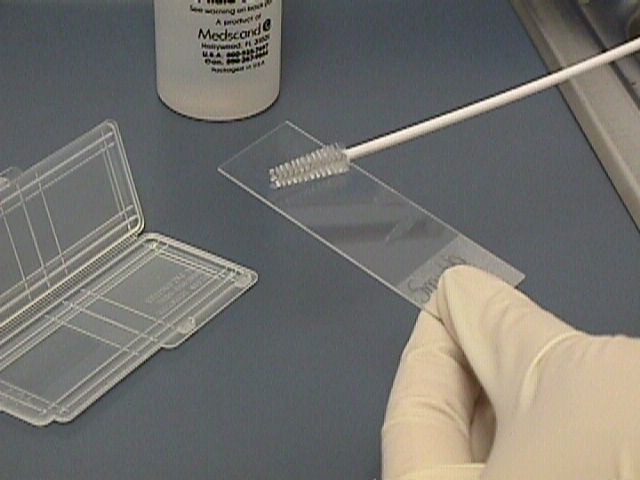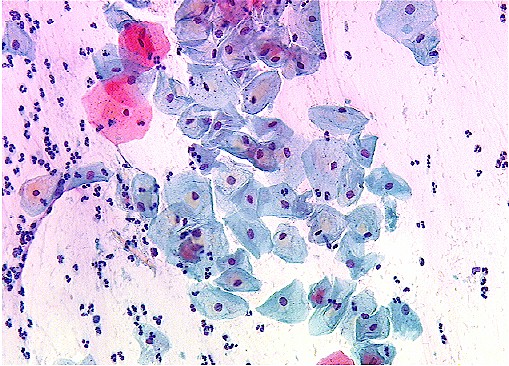|
Pap Smears |
 In the 1940's, Dr. Papanicolaou developed a technique for sampling the cells of the
cervix (Pap smear) to screen patients for cancer of the cervix. This technique has proven
to be very effective at not only detecting cancer, but the pre-cancerous, reversible
changes that lead to cancer.
In the 1940's, Dr. Papanicolaou developed a technique for sampling the cells of the
cervix (Pap smear) to screen patients for cancer of the cervix. This technique has proven
to be very effective at not only detecting cancer, but the pre-cancerous, reversible
changes that lead to cancer.
While not originally designed to detect anything other than cancer, the Pap smear has proven useful in identifying other, unsuspected problems. Generally, the Pap smear detects about:
- 90% of cervical cancers,
- 50% of uterine cancers. and
- 10% of ovarian cancers
So useful has the Pap smear become, it is considered an essential part of women's health care. It is typically performed annually in sexually-active women of childbearing age, although there are some important exceptions.
Because the Pap smear is a screening test, it can have both false positive and false negative results. For this reason, it is important to have the test performed regularly. It is not likely that the Pap smear will miss an important lesion time after time after time.
 A number of forms of Pap smears have evolved. The standard,
traditional Pap technique involves smearing the specimen onto a glass
slide, which is then processed and read by a cytotechnologist. Newer
techniques involve changes in specimen handling (fluid medium) and
computer-assisted screening, all designed to improve accuracy.
A number of forms of Pap smears have evolved. The standard,
traditional Pap technique involves smearing the specimen onto a glass
slide, which is then processed and read by a cytotechnologist. Newer
techniques involve changes in specimen handling (fluid medium) and
computer-assisted screening, all designed to improve accuracy.
Frequency of Pap Smears
Until recently, most experts recommended annual screening with Pap
smears for adult women. Based on the experience gained in annual
screening, some newer recommendations have evolved, to improve the
economic and medical efficiency of Pap smear screening. These
recommendations (American Cancer Society) include:
- Screening should begin no later than age 21.
- Screening should begin earlier than age 21 if the patient is sexually active. In this case, it should start 3 years after initiation of vaginal intercourse.
- Once initiated, screening should be performed annually if a traditional, glass-slide-based technique is used. If liquid medium is used, Pap smear screening may be performed every other year.
- After age 30, for women who have had 3 consecutive, normal Pap smears, screening frequency may be reduced to every two to three years.
- Women who are HIV positive, immunocompromised due to disease or medication, or are DES daughters, should continue annual screening.
- Screening may stop following a total hysterectomy (including the cervix), if the the patient is at low risk, and has had three consecutive normal Pap smears within the last 10 years.
- High risk patients, including those with a history of cervical cancer, DES exposure in-utero, HIV positive, immunocompromised from medication, and those tested positive for HPV, should continue to be screened indefinitely.
- Screening may stop after age 70, if the patient is low risk, and has had three normal Pap smears over the last 10 years.
- Screening may be omitted in the case of women with life-threatening or other serious illness.
